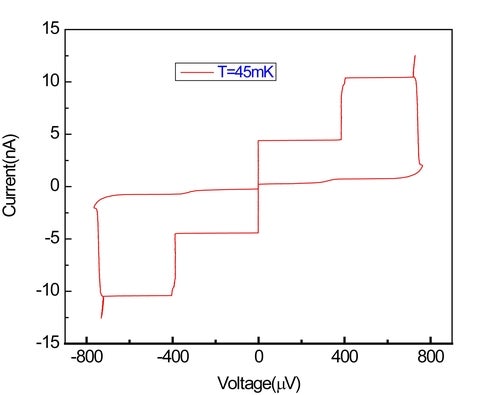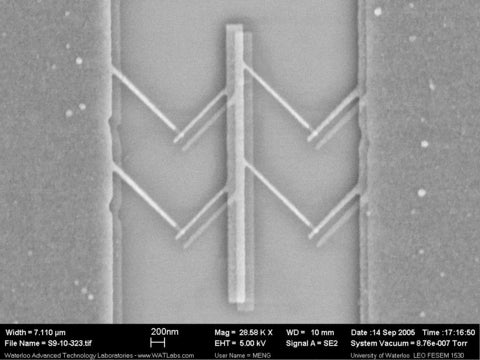Quantum systems involving Josephson junctions have attracted much interest for their potential applications such as SQUIDs, electrometers and quantum information devices. The inevitable dissipation coupled to these systems can either enhance or reduce quantum fluctuations, directly affecting quantum coherence. Other sources of decoherence include; critical current fluctuations, flux noise of Josephson junctions, and background charge fluctuations. Recently, much progress has been achieved in studying the mechanism of different sources of decoherence sources, a comprehensive understanding of how dissipation affects junction characteristics, however, is still an intriguing research topic.
Our superconducting single electron transistor (sSET) consists of a small superconducting island connected to two superconducting leads via four tunnel junctions, each with self-capacitance C and normal-state resistance RN, and each side forms a dc SQUID configuration. The device is deposited on a GaAs/Al0.3Ga0.7 heterostructure with a two dimensional electron gas (2DEG) embedded 100 nm below the surface, which also acts as a gate, capacitively coupled to the island. Two energy terms, Josephson coupling energy EJ and charging energy EC determined by RN and the total capacitance of island plus junctions, play a major role of the device properties. When EJ is dominant, the phase variable is well defined, the charge number has large fluctuations, and vice versa. Our device is in an intermediate regime where EJ is comparable with EC. The incorporated SQUID configuration allows one to tune the Josephson coupling energy by adjusting an applied flux. The 2DEG has an adjustable sheet resistance which allows one to control the dissipation “seen” by the sSET. Our device is designed to allow a fully adjustable hamiltonian where each term including; charge, Josephson coupling, and dissipation is controllable. Our transport measurement shows clear single electron periodicity of zero bias conductance and a weak temperature dependence. The switching current dependence is currently being mapped out on as a function of dissipation, and temperature.

An I-V curve of a sSET at 45mK

Electron microscope image of our superconducting SET